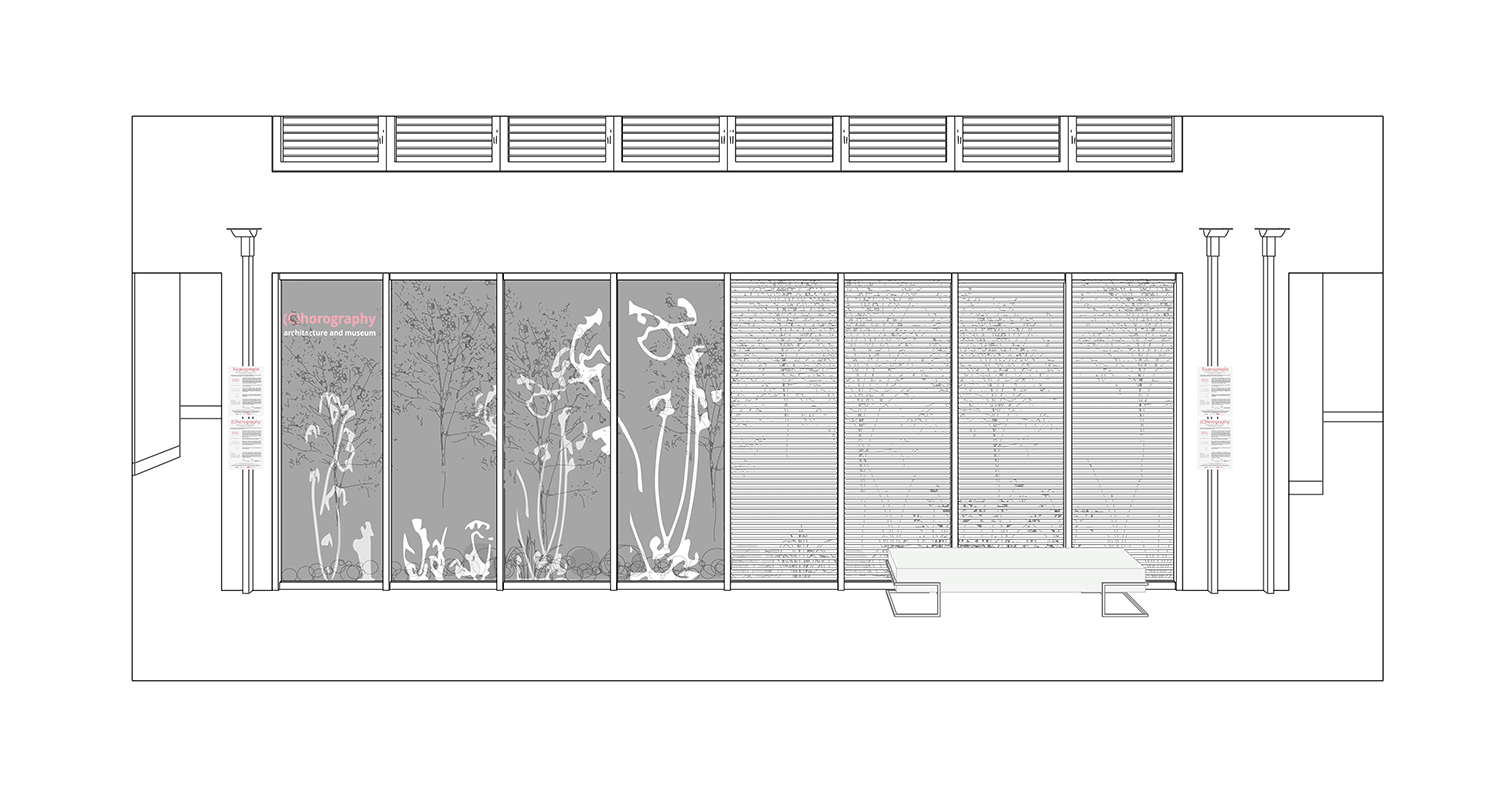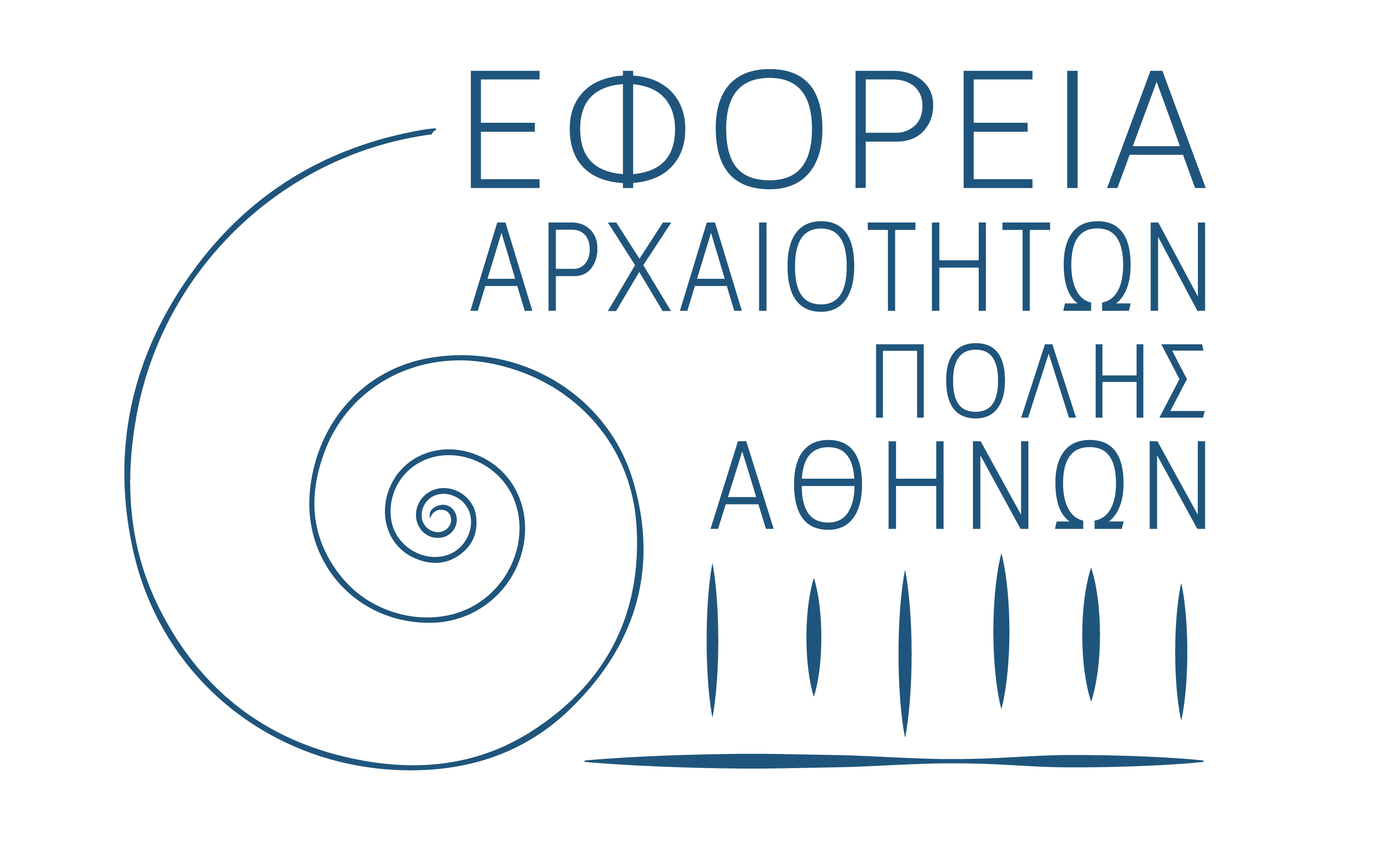(C)horography

(C)horography
Main circulation axis, Archaeological Museum of Ioannina, 2024-2025
The work, entitled ‘(C)horography’, adds an intangible, digital layer on the material surface of the glass wall, and combines visual images (animation, graphics), original music and a field of sounds, including nature soundscapes.
The media intervention aims to turn attention to the building of the Archaeological Museum of Ioannina and to distinctive characteristics of the architecture of Aris Konstantinidis, and in parallel express the idea that the design of space (horos in Greek) affects visitor experience– the way visitors explore the museum, perceive and read the objects, and become aware of the co-presence with other visitors.
Key elements of the visual narrative
The visual narrative is activated by visitor movement, and begins with the contour ‘description’ of the display area. Fundamental choices of the architect unfold progressively, taking as starting point the carefully considered placement of the building within the existing topography – it is located on a raised natural terrain on the edge of a park, and overlooking the lake.
The rhythm of the narrative changes when attention is focused on the organized system of lines that create the syntax and the form of the building. The alternating rhythm of ceiling heights, of 3 m and 5 m., is related to the alternating rhythm of open and closed spaces along the route. Different elements are drawn on the two dimensional plan (transparent walls and door openings, three atria, later changes of the interior space), with special emphasis on the main circulation axis which traverses the whole length of the building, and the three parallel axes of movement in the interior and exterior of the museum.
The plan of the museum gives place to a section drawing, directing attention to the way the organization of space affects visitors’ movement and viewing patterns. The transparent door openings create visual links through the atria and the sense of visual depth.
The last part of the visual narrative reverses the perspective, moving the viewer’s attention from the atrium to the interior space of the Museum: it constitutes the meeting place for archaeological objects and people, from different periods and regions of Epirus, and the point of intersection of the trajectories of different visitors, rendering the viewing of objects and the transmission of knowledge a collective experience.
John Peponis’ book ‘Chororaphies’ (1997) inspired the title of the digital intervention.




